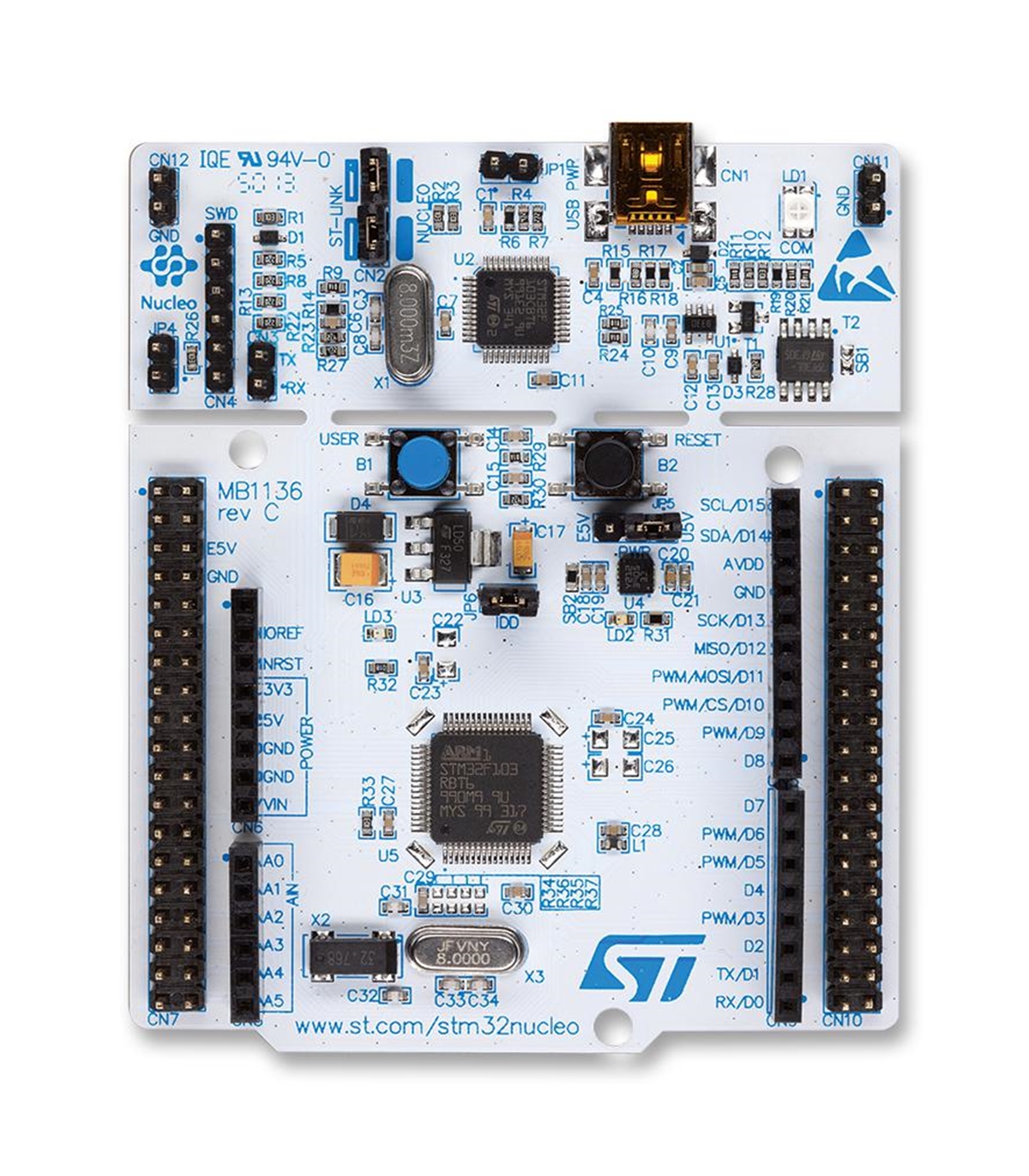

- #NUCLEO BOARD WITHOUT MORPHO HEADER PINS MANUAL#
- #NUCLEO BOARD WITHOUT MORPHO HEADER PINS FULL#
- #NUCLEO BOARD WITHOUT MORPHO HEADER PINS SOFTWARE#
- #NUCLEO BOARD WITHOUT MORPHO HEADER PINS FREE#
#NUCLEO BOARD WITHOUT MORPHO HEADER PINS FREE#
I am at a loss for what solder bridges to set on/off in order to free up PD8/PD9. I've checked and found that PD8/PD9 have continuity with SB19/SB12.įinally, the schematics document shows PD8/PD9 connected to SB82/SB81, which I have confirmed also with the multimeter. On the same page (page 27 of the manual), in the text description, it says "Flying wires have to be connected between PD8/PD9 (USART3 available on SB19/SB12)". Furthermore, I've checked with a multimeter and I can't find continuity between PD8/PD9 and any of these solder bridges. However, my board from factory comes with SB4, SB5 and SB7 off, and only SB6 on.

To use PD8 and PD9 with the morpho connector, I should flip these solder bridges (from ON to OFF and vice-versa). Pins PD8 and PD9 default's configuration, according to page 27 of the manual, is SB5 and SB6 ON, and SB7 and SB4 off. PD8 and PD9 are used for USART3 communication which I do not need. I have verified there is continuity with SB77 and SB77 is on by default, so the solution here would be to remove SB77.
#NUCLEO BOARD WITHOUT MORPHO HEADER PINS MANUAL#
of the manual shows PD10 connected to SB77, with SB77 on by default, and flipping it to off should enable morpho connector use. I do not know the purpose of USB_OTG_FS_PWR_EN, however I believe it is related to CN13 USB, which I do not need. I have verified that PE1 connects to R71 using a multimeter, and the schematics/manual show no solder bridge to disconnect the LED, so the first one I consider solved by removing the resistor R71. So, pin PE1, according to the schematics can be disconnected by removing R71.
#NUCLEO BOARD WITHOUT MORPHO HEADER PINS SOFTWARE#
Each Expansion Board is supported by STM32-based software modules. I am following the schematics below (MB1364):Īnd the user manual for MB1364 found here: The Expansion Boards are equipped with standardized interconnections, like an Arduino Uno R3 connector, or a Morpho connector for a higher level of connectivity. (Current use verified through STM32CubeIDE) PD10, currently USB_OTG_FS_PWR_EN, needed for FMC_D15. PD9, currently ST_LINK_TX, needed for FMC_D14. PD8, currently ST_LINK_RX, needed for FMC_D13. In order to do this I need to free up the following 4 pins, to be used by the morpho connector: PE1, currently yellow user LED, needed for FMC_NBL1.

You can find more details on the available pins and labels in the PeripheralPins.c and PinNames.h files.
#NUCLEO BOARD WITHOUT MORPHO HEADER PINS FULL#
STMicroelectronics Morpho extension pin headers for full access to all STM32 I/Os.16-stream DMA controller with FIFOs and burst support.GPIOs (114) with external interrupt capability.256+4 KB SRAM, including 64 KB of CCM (core couple memory) data RAM.The STM32 Nucleo-144 board does not require any separate probe, as it integrates the ST-LINK/V2-1 debugger/programmer and it comes with the STM32 comprehensive software HAL library, together with various packaged software examples,, as well as a direct access to the ARM®mbed™online resources. The ST Zio connector, which is an extension of Arduino™ Uno V3, provides access to more peripherals and ST morpho headers make it easy to expand the functionality of the Nucleo open development platform with a wide choice of specialized shields. Crystal may be present or not depending on board version, refer to Section 6.7.2. The STM32 Nucleo-144 board provides an affordable and flexible way for users to try out new concepts and build prototypes with the STM32 microcontroller, choosing from the various combinations of performance, power consumption and features. ST morpho extension pin headers for full access to all STM32 I/Os.


 0 kommentar(er)
0 kommentar(er)
